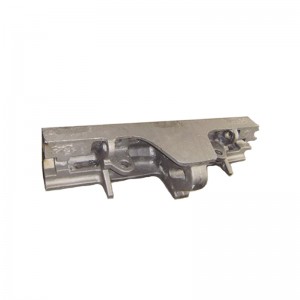کانونی یەکەم . 10, 2024 01:01 Back to list
Innovative Techniques in Industrial Casting for Enhanced Manufacturing Efficiency
Industrial Casting An Integral Process in Manufacturing
Industrial casting is a fundamental manufacturing process that involves pouring molten material into a mold to create complex shapes and components. This technique is indispensable in various sectors, including automotive, aerospace, construction, and consumer goods. As industries continue to evolve and demand for precision-engineered products increases, understanding the nuances of industrial casting becomes even more critical.
One of the primary benefits of industrial casting is its ability to produce intricate shapes with high dimensional accuracy. This capability reduces the need for additional machining, saving both time and costs. Various materials can be used in the casting process, including metals such as iron, aluminum, and bronze, as well as other materials like plastics and ceramics. The choice of material often depends on the specific requirements of the final product, such as strength, weight, and resistance to corrosion.
There are several types of casting methods employed in the industry, each with its unique advantages and applications. The most common methods include sand casting, investment casting, die casting, and centrifugal casting.
1. Sand Casting This traditional method involves creating a mold from sand, which is then filled with molten material. Sand casting is highly versatile and can accommodate a wide range of sizes and complexities. It is particularly favored for large components, such as engine blocks and frames.
2. Investment Casting Also known as lost-wax casting, this process involves creating a wax pattern of the desired part, coating it with a ceramic material, and then melting out the wax to leave a hollow mold. Investment casting is renowned for its precision and ability to produce components with fine details, making it popular in industries like aerospace and medical device manufacturing.
industrial casting

3. Die Casting In this method, molten metal is injected into a mold under high pressure. Die casting is ideal for producing large quantities of small to medium-sized parts with excellent surface finish and dimensional consistency. It is widely used in the automotive industry for components such as engine housings and transmission cases.
4. Centrifugal Casting This technique is used primarily for cylindrical parts. In centrifugal casting, molten metal is poured into a rotating mold, which creates a strong centrifugal force that distributes the metal evenly, resulting in a denser product. This method is often used for pipes and fittings.
The efficiency of industrial casting is not just about the processes themselves; advancements in technology have played a significant role in improving casting methods
. Computer-aided design (CAD) and computer-aided manufacturing (CAM) systems allow for more precise mold designs and simulations, reducing the risk of defects and optimizing the flow of molten material. Furthermore, advancements in materials science have led to the development of new alloys and composite materials, enhancing the strength and durability of cast products.Despite its numerous benefits, industrial casting does face challenges. Issues such as mold degradation, defects due to cooling rates, and foundry emissions have necessitated ongoing research and development. Modern foundries are increasingly adopting eco-friendly practices, such as recycling scrap metal and utilizing energy-efficient processes, to mitigate their environmental impact.
Quality control is another critical aspect of industrial casting. Ensuring that each cast component meets stringent specifications and tolerances is vital. Techniques such as non-destructive testing (NDT) are employed to inspect and validate the integrity of castings without causing damage. These methods include ultrasonic testing, X-ray inspection, and dye penetration testing, which help identify potential flaws before the components are integrated into larger systems.
In conclusion, industrial casting is a vital process that underpins many facets of modern manufacturing. Its ability to produce complex, high-quality components efficiently makes it essential across various industries. As technology continues to advance and environmental considerations become more prominent, industrial casting will undoubtedly evolve, leading to smarter, greener, and more efficient manufacturing solutions. Understanding the intricacies of this process not only highlights its importance but also paves the way for innovation and growth in the manufacturing landscape.
-
Durable Cast Steel Concrete Pipe Mold Bottom Rings & Base Trays
NewsAug.23,2025
-
Centrifugally Cast Iron Water Main Pipe for Reliable Mains
NewsAug.22,2025
-
Durable Centrifugally Cast Iron Water Main Pipe
NewsAug.11,2025
-
Centrifugally Cast Iron Water Main Pipes for Reliability
NewsAug.10,2025
-
High-Quality Centrifugally Cast Iron Water Main Pipes
NewsAug.09,2025
-
Durable Cast Iron Water Main Pipe & Drainage Solutions
NewsAug.08,2025


